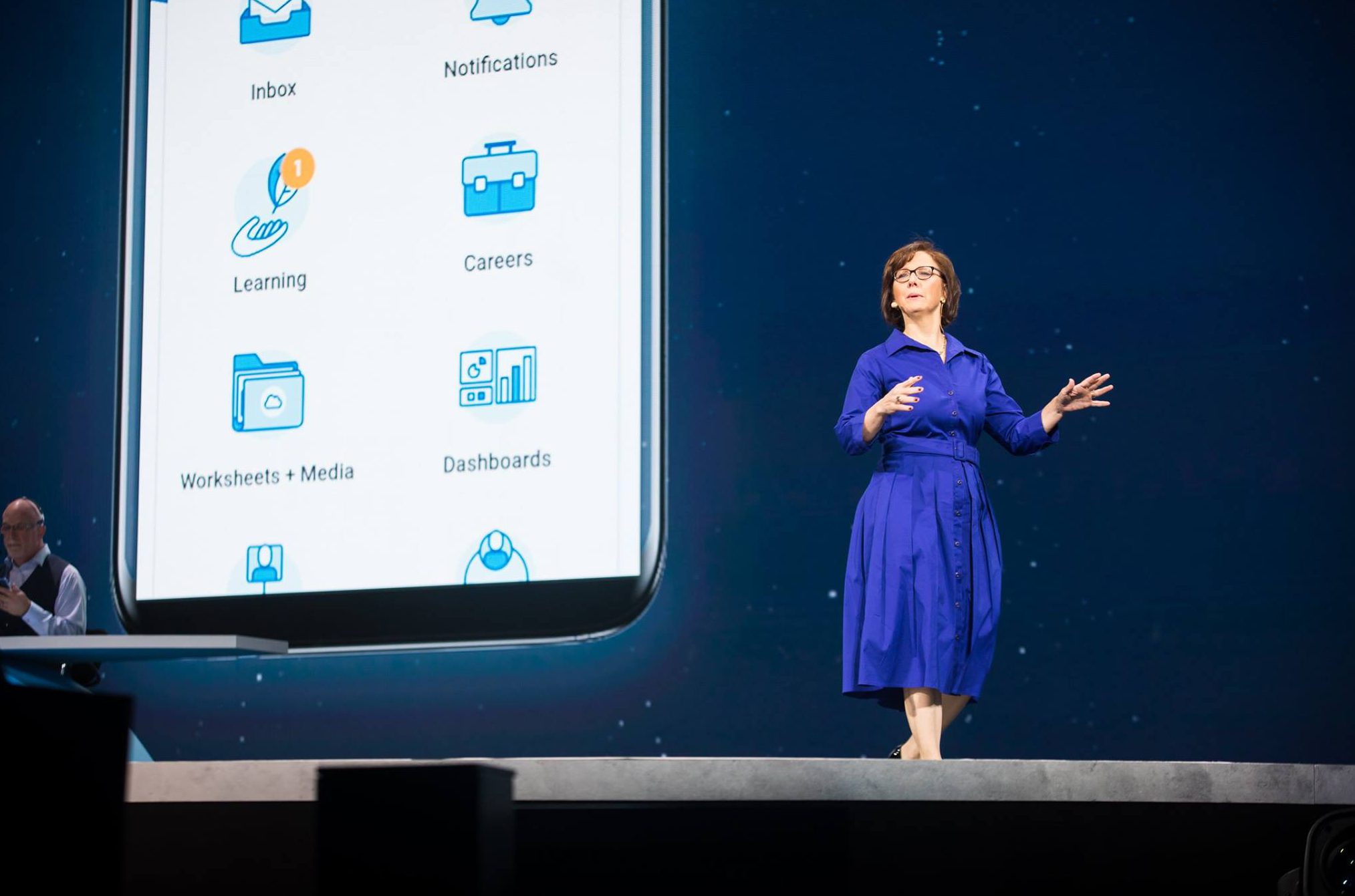Bhusri’s Vision to Make Workday a New US Legacy

Workday was founded in March 2005 and launched in November 2006. Initially, it was funded by Duffield and venture capital firm Greylock Partners. In December 2008, Workday moved its headquarters from Walnut Creek to Pleasanton, where PeopleSoft, founder Duffield’s prior company, was located. Workday sells software and services using the Software as a Service (SaaS) model.
In 2006, Workday released its first product, Workday Human Capital Management. The following year, it announced its financial suite, Workday Financial Management. The Workday Human Capital Management (HCM) side received emphasis originally, but the company has worked over the years to make its financial software more competitive with other Enterprise Resource Planning (ERP) systems by adding budgeting, planning and analytics features, as well as support for larger enterprises.
Continue to rise, its Composite Reporting tool, released in 2014, provided multidimensional financial and operational reporting and analytics designed to be scalable in large enterprises. There is Workday Insight Applications, which came out in 2015, allowed users of Workday software to apply predictive analytics and machine learning to Workday HCM and financial data. Workday Planning, a budgeting, planning and forecasting tool, helps to unify HR and finance analytics and planning, according to the vendor.
Workday claims its use of a single, cloud-based database for both HCM and financials provides better integration and embedded business intelligence across business functions than is available in most ERP systems
Over the years, Workday has added other components of HCM, talent management and finance to its suite, and it released versions for specialized markets, such as higher education and government.
Workday made its first public offering of stock in October 2012 on the New York Stock Exchange. For the fiscal year that ended on Jan. 31, 2016, Workday reported annual revenue of $1.16 billion. Later that year, Workday announced it had adopted IBM Cloud for software development and testing, and it unveiled a partnership with Microsoft to integrate Workday HCM and financials with Office 365.
Workday provides enterprise cloud applications for human capital management, payroll, financial management, grants management, time tracking, procurement, employee expense management and analytics. The company provides its customers highly adaptable, accessible, and reliable applications to manage critical business functions that enable them to optimize their financial and human capital resources. Its applications are designed for global enterprises to manage complex and dynamic operating environments.
Workday CEO’s Vision- Why do Machine Learning and Blockchain Rule?

Workday co-founder and CEO Aneel Bhusri has been a success. His own net worth is valued by Forbes in the billions. He sees technology playing a big role in the success of all workers in the future. In particular, machine learning and the blockchain.
“Blockchain is a technology looking for a problem to solve. We found one to solve, which is credentials” Bhusri told the anchors of CNBC’s “Squawk Box” from the World Economic Forum in Davos, Switzerland, on Thursday.
“Employees can go from company to company and carry credentials with them in a private network. It can’t be edited by an outside source,” he said.
The blockchain would prevent the ability of job seekers to lie about their professional and educational histories, which has been a pervasive problem, even up to the level of CEOs, on platforms like LinkedIn and for background-check firms that work with hiring companies. Workday has a partnership with First Advantage for background-screening technology.
“Whatever information you want to carry … it gives employees power over data,” Bhusri said. “Universities can also make sure that diplomas cited by job seekers are real.”
The education sector is moving in this direction. One example is Blockcerts, a platform developed at MIT that can be used for creating, issuing, viewing, and verifying blockchain-based educational certificates.
While many talks about AI, Bhusri said he prefers to talk about machine learning and how its predictive power will change the job market of the future.
“AI gives people images of the Terminator, and that’s not the world we live in. Machine learning lets you make predictions … sifting through massive amounts of data. … Humans are great at making judgments.”
Bhusri said the predictive power of machine learning will allow humans to then make great judgments, and that process will become important to finding the right job fit.
“AI will predict the right next move in your career” Bhusri said.
Workday’s Unique App to Shape up The Best Place to Work At

Workday a leader in enterprise cloud applications for finance and human resources, has announced the availability of Workday Learning, an application that offers a personalized, meaningful learning experience for organizations to encourage career development at every stage of the employee lifecycle. Leveraging a consumer-like approach with recommendations and leading-edge video and user-generated content capabilities, Workday is reimagining professional learning to help companies improve employee engagement. Built into the core of Workday’s unified suite of applications, including Workday Human Capital Management (HCM) and Workday Financial Management, Workday Learning extends customers’ ability to cultivate their workforces and enables them to better align employee development and workforce productivity to drive better business outcomes- all in a single system.
Workday Learning -What to Expect from The App Designed for Ever-Evolving Users?
Today’s constant rate of change and disruption has forced companies and institutions to reinvent themselves in order to keep pace, prompting a transformation of people, cultures, and entire organizations into adaptable enterprises. Workday Learning was created to meet the evolving needs of organizations and employees with a personalized approach to learning and development, similar to the experiences sought out with consumer technologies. With greater parity between personal and professional learning, people can learn at work as they do in their everyday lives in a more engaged and productive manner. As a result, employees can benefit from broadened skillsets, additional growth opportunities, and greater control of their career paths while organizations become more change-ready and able to keep their best people and close talent gaps, ultimately boosting their bottom line.

Customers using Workday Learning, including early adopters CareerBuilder, Commerce Bank, Hootsuite, McKee Foods, TalkTalk Group, and Unum Group, benefit from:
#1 Peer-to-Peer Learning:
Using the latest collaboration and social learning technologies, Workday empowers people to consume as well as create and share content anywhere, any time, and on any device. By doing something as simple as shooting and sharing a video tutorial using their smartphone, employees can foster a more interactive community that promotes learning, teaching, and coaching across all levels within the workforce.
#2 Contextual Content:
Because it’s unified with Workday HCM, the app is interconnected with all of an organization’s people practice and can recognize individuals and recommend content based on their preferences and topics of interest. Workday anticipates the evolution of the system to encompass the ability to make recommendations based on an employee’s current role and their career goals. For example, a person preparing for her first management role would receive a notification when a new management seminar opens up for registration. Later, once that same employee is promoted, the system could automatically push relevant content such as new video-based management training and coaching tips to her in order to support development in this area.
#3 Democratization of Video:
Workday takes the complexity out of video so users can focus on creating and sharing content. With unlimited storage, a smart video player that supports standards like HTTP live streaming (HLS), and a cloud infrastructure that encodes, stores, and streams video via a top-tier global content delivery network, Workday Learning ensures the highest quality video experience. It also supports existing packaged learning content in SCORM and AICC formats. As an example, in a few clicks, new employees can learn about their company`s core values by watching a short video created by colleagues, on any device — all without streaming delays.
#4 Targeted Campaigns:
Workday’s campaign management leverages system data to push required and relevant content to targeted employee groups. For example, HR leaders can create a learning campaign for managers leading teams with remote workers, ensuring that they have the relevant resources and communication training needed to effectively guide and motivate individuals from afar.
#5 Built-in, Actionable Reporting and Insights:
Workday Learning makes it possible to measure the ROI and effectiveness of learning activities for better alignment with business priorities. For example, after a new manager development course has finished, business leaders can track manager effectiveness by capturing upward feedback from teams in the following months to gauge the impact and value of that learning experience, and then determine if it’s worthwhile to run the program again for others.
“Discoveries in Difficulties” Is How Workday Thrive Its Business

The decision to make the product available to large enterprises was born from the pandemic. Workday Launch is a preconfigured approach to deployment of the Workday software. According to the Workday website, it customizes a plan to a company’s approach, keeps it consistent, as well as ensures the deployment goes live on time. It also helps communication within the system.
“When COVID-19 became more widespread, we didn’t know what to expect from life in quarantine but more than three months later, we’ve started to adapt,” said Emily McEvilly, chief customer officer at Workday. McEvilly oversees the company’s customer experience organization, which includes professional services, education services, customer success, and Workday support; she’s responsible for deployment success and customer satisfaction.
McEvilly pointed out that even though some things “haven’t changed at all, like laundry, paying bills, and cleaning house,” people still had to adapt to the new world of homeschooling and Zoom happy hours. And businesses, she said, have needs “that dramatically changed.” Welcome to the new normal, developed due to the coronavirus.
Businesses, she said, had to learn to quickly to manage “everything remotely, while others have stayed consistent, like the demand for reliable finance and HR systems. However, the need for those systems to be flexible, cloud-based, and rock solid, has gone from important to critical.”
Critically, she added, ‘Today, many companies are looking for new finance and HCM solutions and don’t have the luxury of time for a lengthy deployment. They need functionality they can use fast.”
Because of the preconfigured head-start, risk is limited, McEvilly said. Clients are given “a predictable timeframe.” Once Workday Launch prepares a prototype, the enterprise can expand and refine the preconfigured prototype to ensure the most appropriate match.
The Bottom Lines
A few more years to its 2nd decade birthday, Workday is now not only known as the best place to work at but also a considerate racer in this tech game. Its deployment solutions started from small business now provide many large enterprises. If the prophecy of “tech rule” comes true, as providing constant updates and innovations would there be chances that Workday prevail in near future?








